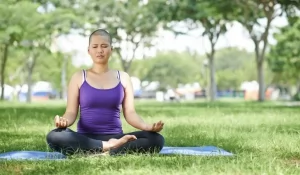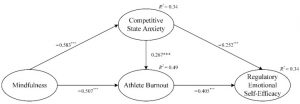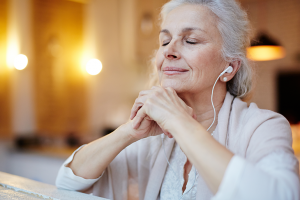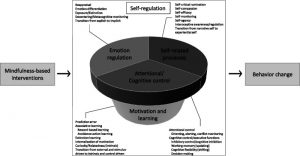Reduce Fatigue in Women with Cancer with Mindfulness
By John M. de Castro, Ph.D.
“The soul always knows what to do to heal itself. The challenge is to silence the mind.” – Caroline Myss
Receiving a diagnosis of cancer has a huge impact on most people. Feelings of depression, anxiety, and fear are very common and are normal responses to this life-changing and potentially life-ending experience. But cancer diagnosis is not necessarily a death sentence. Over half of the people diagnosed with cancer are still alive 10 years later and this number is rapidly increasing. But surviving cancer carries with it a number of problems. Anxiety, depression, fatigue, and insomnia are common symptoms in the aftermath of surviving breast cancer. These symptoms markedly reduce the quality of life of the patients.
Mindfulness training has been shown to help with cancer recovery and help to alleviate many of the residual physical and psychological symptoms, including fatigue, stress, sleep disturbance, and anxiety and depression. The research is accumulating. So, it makes sense to summarize what has been learned about mindfulness and fatigue in cancer recovery.
In today’s Research News article “Effects of mindfulness-based interventions on fatigue and psychological wellbeing in women with cancer: A systematic review and meta-analysis of randomised control trials.” (See summary below or view the full text of the study at: https://www.ncbi.nlm.nih.gov/pmc/articles/PMC9828570/ ) McCloy and colleagues review, summarize and perform a meta-analysis of the published randomized controlled trials on the effects of mindfulness training in treating the fatigue after cancer recovery in women. They identified 21 published research studies including a total of 2326 patients. The majority of the studies employed Mindfulness-Based Stress Reduction (MBSR) training and the primary diagnosis was breast cancer.
They report that the published research found that mindfulness training significantly reduced fatigue, anxiety, and depression with large effect sizes. But there were no significant improvements in sleep or quality of life. Hence, there is strong research evidence that mindfulness training is effective in improving the psychological well-being of women cancer survivors.
“Mindfulness allows us to watch our thoughts, see how one thought leads to the next, decide if we’re heading down an unhealthy path, and, if so, let go and change directions.” – Sharon Salzberg
CMCS – Center for Mindfulness and Contemplative Studies
This and other Contemplative Studies posts are also available on Twitter @MindfulResearch
Study Summary
McCloy K, Hughes C, Dunwoody L, Marley J, Gracey J. Effects of mindfulness-based interventions on fatigue and psychological wellbeing in women with cancer: A systematic review and meta-analysis of randomised control trials. Psychooncology. 2022 Nov;31(11):1821-1834. doi: 10.1002/pon.6046. Epub 2022 Oct 13. PMID: 36221152; PMCID: PMC9828570.
Abstract
Background
Cancer diagnosis and treatment can cause fatigue, stress and anxiety which can have a detrimental effect on patients, families and the wider community. Mindfulness‐based interventions appear to have positive effects on managing these cancer‐related symptoms.
Objective
To investigate the efficacy of mindfulness on cancer related fatigue (CRF) and psychological well‐being in female cancer patients.
Methods
Five databases (CINHAL, Ovid Medline, Ovid Psych Info, Scopus, and Cochrane), and two trial registers (WHO and Clinicaltrials.gov) were searched for randomised control trials from inception to April 2021 and updated in August 2022. Meta‐analysis was performed using Review Manager 5.4. The standardised mean difference (SMD) and 95% confidence intervals (CI) were used to determine the intervention effect. Subgroup analysis was performed for adaptation to types of mindfulness, length of intervention and types of comparator used.
Results
Twenty‐one studies with a total of 2326 participants were identified. Mindfulness significantly improved CRF (SMD −0.81, 95% CI −1.17 to −0.44), depression (SMD−0.74, 95% CI −1.08 to −0.39) and anxiety (SMD −0.92, 95% CI −1.50 to −0.33). No effect was observed for quality of life (SMD 0.32, 95% CI −0.13–0.87) and sleep (SMD −0.65, 95% CI −1.34–0.04). Subgroup analysis revealed that there was little difference in SMD for adapted type of mindfulness (p = 0.42), wait list control compared to active comparator (p = 0.05) or length of intervention (p = 0.29).
Conclusion
Mindfulness appears to be effective in reducing CRF and other cancer related symptoms in women. Adaptations to mindfulness delivery did not have negative impact on results which may aid delivery in the clinical settings.
https://www.ncbi.nlm.nih.gov/pmc/articles/PMC9828570/









